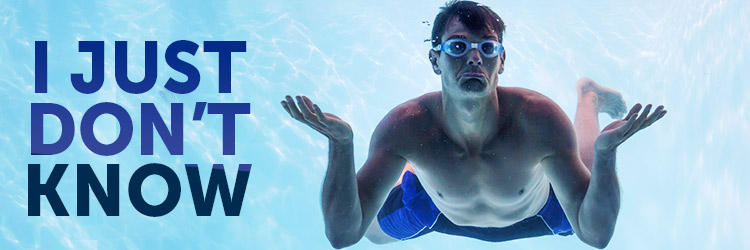They both have hoses, wheels or floppy discs that help them get around and they both magically clean your pool (hopefully) without much intervention from you. Ok we have the similarities down pat, but what is the difference between the two? Stumped?
Every so often we have homeowners who get stymied at the cleaner page picking out their new cleaner. Sometimes they may even rush through the page, see one they like and pull the trigger on the purchase – only later to realize they ordered a pressure side cleaner when their system is only set up for a suction. Well let us tear asunder the restraints of ignorance and educate ourselves on the topic of pool cleaners. Let’s get started!
Suction Pool Cleaners
The concept of a suction pool cleaner is basically an underwater version of a carpet vacuum. The cleaner has two main parts, the hose and cleaner head. The head is where all the magic happens, consisting of the turbine and drive system that maneuvers the cleaner around the pool floor. The hose is inserted into a dedicated suction line or the skimmer that is drawn upon by the main filter pump. The cleaner comes with an adaptor to fit the hose into the bottom port of your skimmer for easy installation.

The turbine of a cleaner looks akin to a paddlewheel you might see on a river boat. As the turbine spins, it turns the drive shaft within the cleaner. This normally contains of a series of gears that transforms the simple spinning of the turbine into a random gridding of the cleaner’s path. The grid path allows for full coverage of the floor, maximizing cleaning time and the cleanliness of your pool.
Suction cleaners have two major categories of designs, the bipedal and the disced versions. The bipedal cleaner use two wheels or feet on either side of the head to maneuver the cleaner. In our example picture we see the Poolvergnuegen Pool Cleaner and the always popular Hayward Navigator (not pictured.) The Poolvergnuegen (fun word) uses the simple wheeled approach that allows it to pivot for sharp turns and roll over obstacles with ease. The Navigator utilizes a unique flappy wing design that makes it look like a shuffling bug. The design has proven popular for years but can be costly to maintain because of the intricate winged design.
There is no better example of disc style suction cleaners than the Zodiac’s Barracuda Series that have been on the cutting edge of this category for decades. Disc cleaners run on on a diaphragm system that contracts and relaxes quickly to create a glide-like path to the cleaner as it trawls the pool bottom like a Manta Ray.
The part inside of the cleaner driving the unit is this rubber sleeve called the diaphragm. This piece is made of heavy duty rubber which allows it to contract and expand, controlling the flow of suction. The contraction builds the suction pressure within the cleaner so it may be released when the diaphragm relaxes. As the diaphragm relaxes after a contraction, the flow is released and the cleaner jerks forward. The hose of a suction cleaner will appear to dance back and forth because of this constant diaphragm movement.
Pressure Side Cleaners
Pressure side cleaners are a little more complicated than their suction counterparts. Instead of running off a dedicated suction line connected to your main filtering pump, it uses its own booster pump. The water from the booster pump rushes through the cleaner to cleanse the surface of your pool of debris. We will get into the exact process of how this cleaning happens further down.
Outside of the booster pump, the parts of the cleaner remain the same; the head and the hose form the two major parts of the cleaner. The hose of a pressure cleaner is generally thinner to better accommodate high pressure flow. The head features a debris bag that traps the debris picked up by the cleaner for disposal.

The head’s guts are called a Water Management System that diverts the surging water flow from the booster pump to either the drive system or for use in cleaning. The manner in which the water is used to clean is actually quite neat; it’s called the Venturi Effect. In the base of the cleaner you will notice one to four spouts that face upward towards the leaf net; these are what clean your pool.
When we say pressure side cleaner, some might think that the cleaner is blasting the pool floor with a strong jet of water but it is actually the opposite. These spouts shoot strong jets of water up away from the surface of the pool. Their close proximity to the surface and the surge of water blasting upwards creates a strong vacuum directly under the cleaner. The resulting vacuum force scours and pulls up any debris into the cleaner’s bag to be caught.
Another cool feature of most pressure side cleaners is the little whip tail attached to the head of the cleaner. This tail acts as an agitant to whip dirt, making it easier to be picked up by the cleaner. The tail also comes with a scrubber brush foam tip for an extra edge on picking up dirt.








Leave a Reply